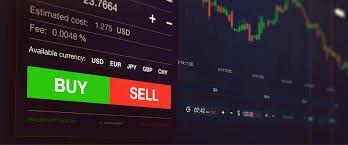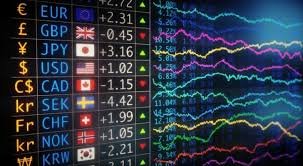
Understanding Pips in Forex Trading: A Comprehensive Guide
Forex trading is a dynamic and fast-paced market where currency pairs are traded against one another. One of the most essential concepts in Forex trading is the concept of “pips”. A pip, or “percentage in point,” is a unit of measure used to express the amount of change in the value of a currency pair. For anyone looking to succeed in Forex trading, understanding pips is crucial. In this comprehensive guide, we will break down what pips are, how they are calculated, their significance in trading strategies, and more. Additionally, if you’re interested in expanding your trading capabilities, be sure to check out forex trading pip Best Crypto Apps for trading innovations.
What is a Pip?
A pip is the smallest price increment in a currency pair that can be traded. Most currency pairs are quoted to four decimal places, and a one pip movement is equivalent to a change of 0.0001. Therefore, if the EUR/USD currency pair moves from 1.1050 to 1.1051, that 0.0001 increase represents one pip. However, for currency pairs that include the Japanese Yen, a pip is measured differently; it is typically represented to two decimal places. For example, if the USD/JPY pair shifts from 110.50 to 110.51, it also represents a one pip movement.
Why are Pips Important?
Pips are essential for several reasons in Forex trading:
- Measurement of Price Movements: Pips provide a uniform way to measure and compare price movements across different currency pairs, which can help traders make informed decisions.
- Profit and Loss Calculation: The value of a Pip helps traders understand the potential profit or loss they might incur from a particular trade. This understanding is critical for managing risk and implementing effective trading strategies.
- Risk Management: Knowing how many pips a trade is worth allows traders to set stop-loss and take-profit levels accurately. This gives traders better control over their trading performance.

Calculating Pip Value
The pip value can vary depending on the size of the trade and the currency pair being traded. Here’s a simplified way to calculate the pip value for standard, mini, and micro lots:
- Standard Lot (100,000 units): The pip value is typically $10. For example, if the EUR/USD pair moves up by one pip, the trader would gain or lose $10.
- Mini Lot (10,000 units): The pip value here is usually $1. Therefore, a one pip movement in EUR/USD would result in a $1 gain or loss.
- Micro Lot (1,000 units): The pip value is roughly $0.10. This means that for a one pip change in EUR/USD, a trader would either gain or lose 10 cents.
For instance, if a trader is trading a standard lot of EUR/USD and the price moves from 1.1200 to 1.1210, that represents a movement of 10 pips, leading to a profit or loss of $100.
Pips and Leverage
Leverage plays a significant role in Forex trading and can amplify both gains and losses. Understanding pips allows traders to calculate their risk better and position size according to their account size and the leverage available. When using leverage, even relatively small changes in pips can lead to significant impacts on account equity. The key is to use leverage wisely and understand how much risk you are taking on for every pip movement.
Pip Spreads and its Impact
The spread is the difference between the bid price and the ask price and is expressed in pips. This is crucial for Forex traders as the spread directly affects profitability. Specifically, if the spread is 2 pips, the trader has to be mindful that the market needs to move in their favor by at least 2 pips for them to start making a profit. It is vital to consider spreads when selecting a broker and devise trading strategies, as lower spreads allow for more cost-effective trading.

Practical Application of Pips in Trading Strategies
Pips can be employed in various trading strategies, from scalping to swing trading. Seasoned traders often build their strategies around how many pips they aim to profit per trade, which can determine their entry and exit points:
- Scalping: This is a short-term strategy, where traders look to capitalize on small price shifts, often targeting just a few pips per trade.
- Day Trading: Day traders often look for larger movements, ranging from 10 to 100 pips, based on technical analysis and market sentiment.
- Swing Trading: This approach aims for larger price movements over a few days or weeks, with traders looking for several hundred pips.
Wrapping Up
Understanding pips is fundamental for anyone engaged in Forex trading. They are not just a measure of price movement but also play a pivotal role in calculating potential profits, managing risks, and formulating trading strategies. Whether you are just starting or have some experience, mastering the concept of pips can greatly enhance your trading performance. As the Forex market continues to evolve, keeping abreast of how pips and trading dynamics shift can provide a distinct edge in your trading endeavors.
Conclusion
Pips are an integral part of Forex trading, influencing everything from trading strategies to risk management. With a proper understanding of how pips function, traders can optimize their trades and potentially increase their profitability. With that said, continuous education and practice are essential for success in the Forex market. Happy trading!
